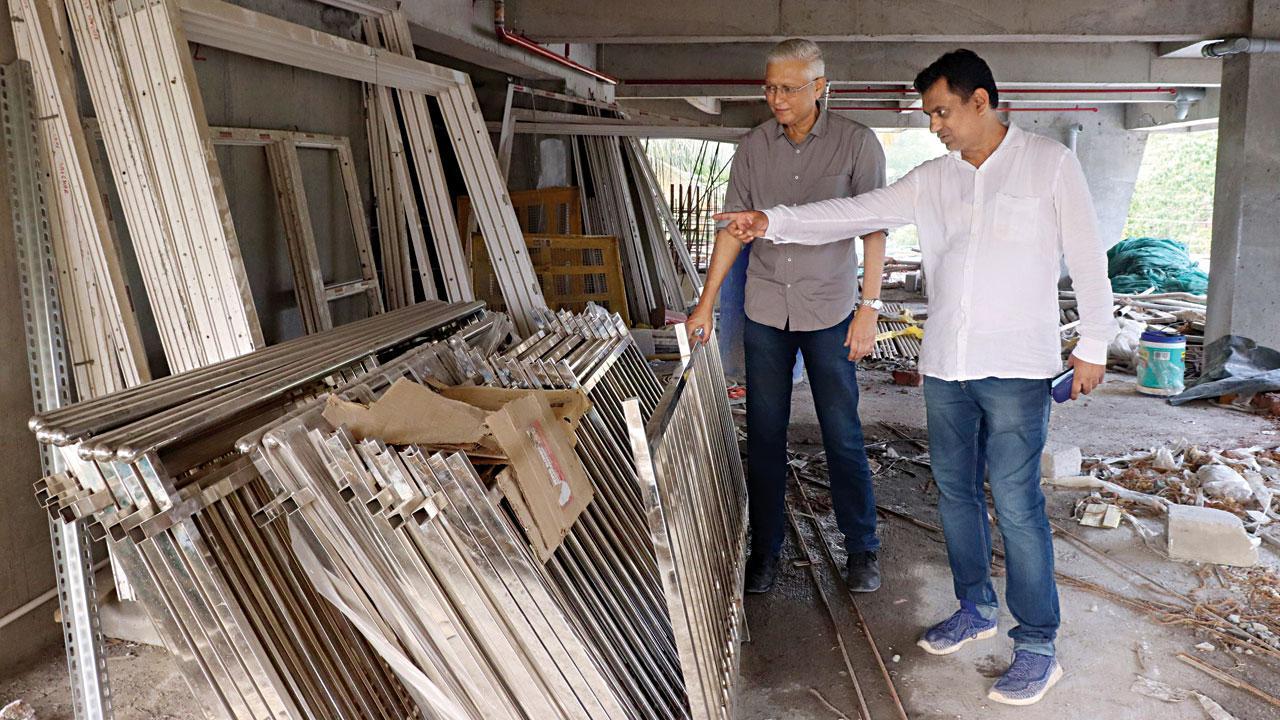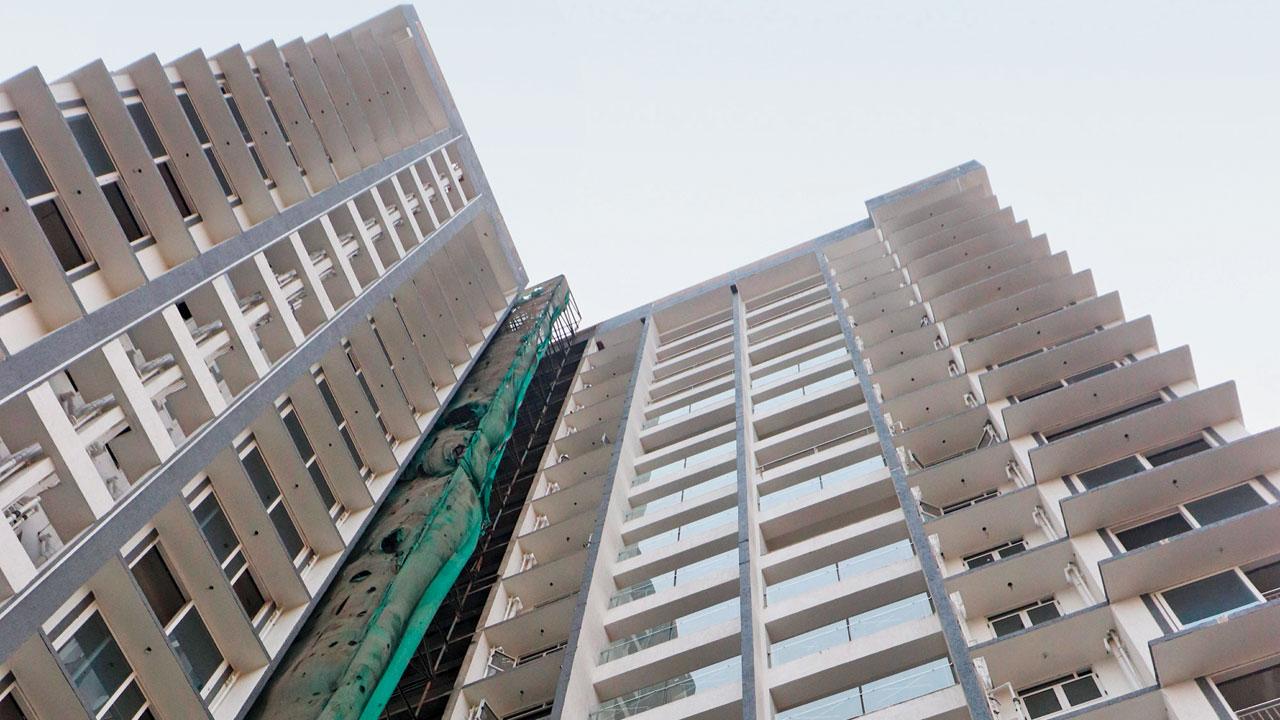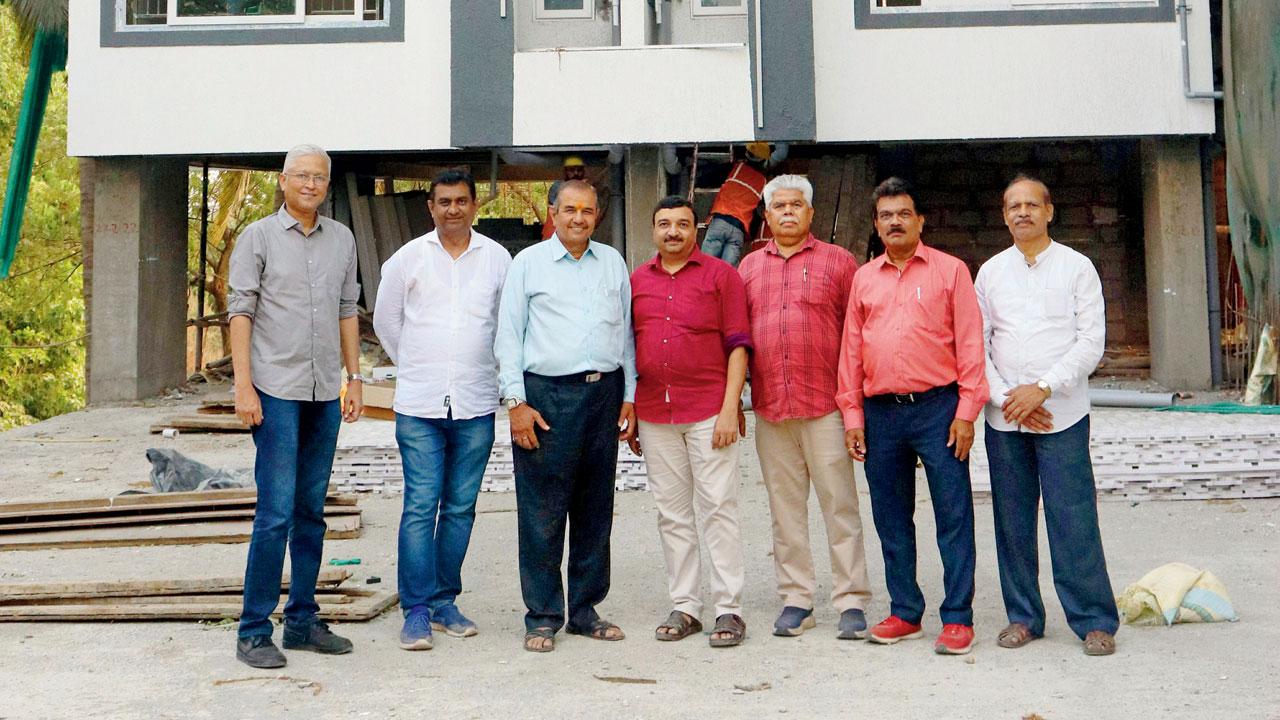From 56 flats to 118, more than double the original floor space—residents of Mulund society that’s first in state to self-redevelop without a loan, share their learnings

The secretary, Milind Mahadik, and core committee member Rakesh Gaikwad point out the big windows used for ventilation
On March 9, residents of Mulund’s Purvarang Society raised the Gudi or brought in their respective new year, in the new homes they built themselves, without a bank loan. Their joy on this momentous occasion doubled just like the carpet area of their new apartments. From 390-sqft 1BHK apartments, they now live in 3BHKs spread over 1,017 sqft; and even benefited from the sale of the additional apartments as their seven-storey high building rose to 23 floors.
This is the stuff of dreams in the maximum city, and Purvarang is the first housing society in Maharashtra to achieve this fairy tale ending. Currently, 800 housing societies in the state have signed self-redevelopment agreements to garner benefits such as 10 per cent extra floor space and a reduction in GST promised by the government.
ADVERTISEMENT

Purvarang Society in Mulund, Mumbai. Pics/Anurag Ahire
In 2014, the 56-flat-strong society in Mulund East was assessed to be structurally unsound by MHADA, signalling redevelopment. The 11-member Management Committee could go the usual way of choosing the right builder for the makeover, which would mean haggling over additional FSI (usually 2.75 to 3 per cent of the original carpet area), requests for commissions in black, rents, or accommodation over the construction period, a wait of as much as 14 years sometimes, inevitable delays and secondary citizen treatment over amenities and quality of construction.
A recce of redeveloped projects in their locality revealed that many projects failed midway due to disagreements with builders over financial demands or their disagreements with residents. Moreover, traditional redevelopment projects can take more than a decade, which was a considerable lifespan of the Purvarang residents—many of them were over 50 years of age.
Instead, they took the floor plan into their own hands and appointed a three-member, all-men core committee to undertake every detail of the redevelopment. That 100 per cent of the residents were on board lubricated the process so much that the new building was up in only four years—despite the COVID-19 enforced lockdown, and a four-month cessation in construction in 2020 to not disrupt the migration of flamingos, as stipulated by Thane Creek Flamingo Sanctuary and state government.
“The redevelopment committee was an open forum for all residents,” says Milind Mahadik, Secretary of the society’s management committee, “We encouraged everyone, including women and children, to participate in the decision-making process.” In the absence of formal representation, the women were recognized as soft power in coercing men to sign on to the self-redevelopment plan.

(From left to right) A photo of the redevelopment committee members, including Rakesh Gaikwad, Advocate Datta Kumthekar, Balkrishna Dhumne, Prabhakar Kuado, Anil Harkar, Milind Mahadik, and Manohar Bugade
“We hired an expert team comprising a designing architect, structural construction consultants, a legal advisor, and an accountant,” says Mahadik. Instead of going to a bank to finance this operation, residents contributed Rs 15,000 to Rs 20,000 towards it per month as maintenance rent, as well as taking responsibility for their interim accommodation. They were given the option of allotting this maintenance rent towards buying more apartments in new Purvarang or carving it out of the profits gained by the sale of the excess flats.
By including solar panels, huge windows for increased ventilation, a special glass material that doesn’t block light but heat, faucets for minimising the water, and charging ports for electric vehicles in their blueprint, they were easily certified as a Green Building by the India Green Building Council, which made them eligible for a 15 to 20 per cent discount on maintenance rent. And to cut overheads of construction materials usually reaped by the contractor, an engineer appointed by the construction consultant managed the purchasing of materials directly from manufacturers such as Ultra Tech cement, JSW steel, and so on.
“Cost of raw materials shot up after COVID,” says Rakesh Gaikwad, a core member of the redevelopment committee. “Steel was R36 per kg before the pandemic, and R86 per kg afterwards. It’s an indispensable construction material and we couldn’t compromise on quality, or delay construction [till prices levelled]. This was one of the reasons we decided to sponsor all raw materials.”
The lockdown enforced by COVID-19 halted the project for 10 months, and then the four-month stall in 2020 to allow flamingos to migrate to Thane Creek. And yet, new Purvarang collectively took only three years to rise—from 2019 to 2024.
Hiring key players directly shaved more lakhs off the budget. “A redevelopment project requires four key agents,” informs Gaikwad, “an architect, a signing authority for required permissions, clearances and NOCs from authorities, Reinforced Cement Concrete consultants, and an Approved Building Products consultant. So instead of hiring a single construction company for these, we hired them separately.”
This allowed elasticity for bespoke infrastructural benefits such as a single room solely for internet, television, and mobile network providers, and a shutter lift that stopped at the nearest floor instead of mid-way during emergencies, committee member and electrical consultant Digambar Naik tells us. Marketing and sale of the excess 62 apartments was also managed by the residents, omitting the intermediary estate agent, and their cut. “Instead of spending on an agency,” says Gaikwad, who led the project’s ‘sales and marketing’ team, “We distributed flyers near the railway station, spoke about it in our social circles, and advertised in newspapers and on YouTube.” As of this report going to print, only five apartments are left.
DIY guide to redevelopment
First, confirmation and clearance are required from all residents. Then, comes MHADA’s feasibility report that takes into account whom the land belongs to and approvals from Coastal Regulation Zones, Environmental Clearance, and NOCs from Traffic, Fire, and Defence departments. After that, the appointed redevelopment committee takes over the construction details.
3BHKs
Flat upgrade from the earlier 1BHKs, of 2x traditional FSI
 Subscribe today by clicking the link and stay updated with the latest news!" Click here!
Subscribe today by clicking the link and stay updated with the latest news!" Click here!








